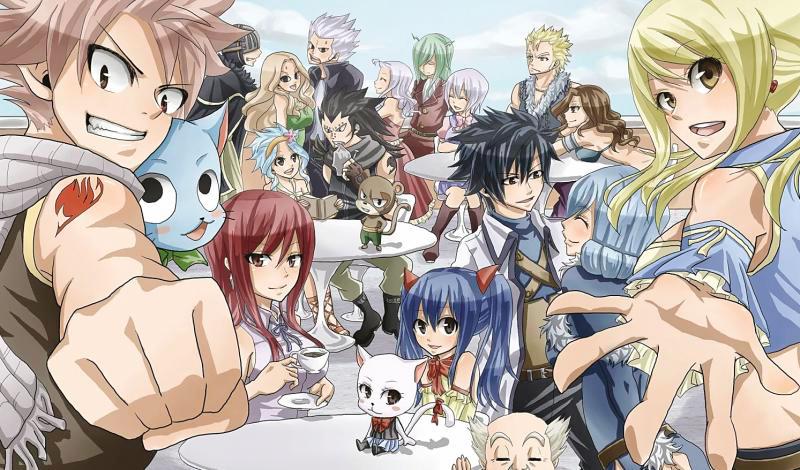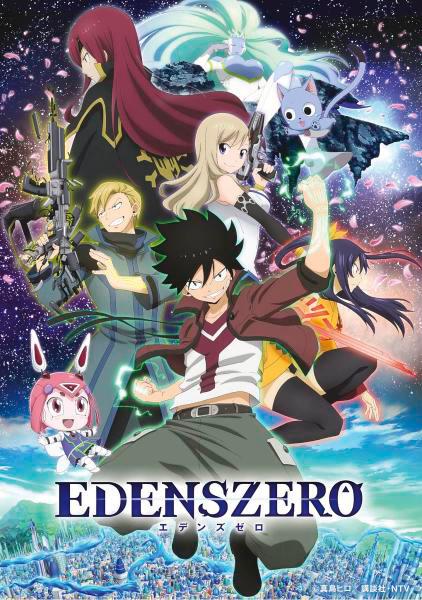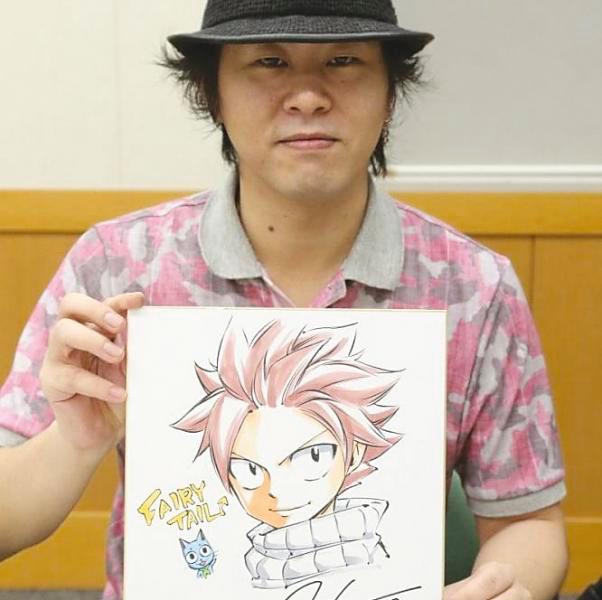HIRO MASHIMA is a Japanese manga artist best known for his fantasy series Rave Master, Fairy Tail, and Edens Zero. Born on May 3, 1977, he grew up in Japan's Nagano province. When he was younger, he aspired to be an artist, specifically one who worked with manga. His grandfather often looked for discarded manga for him to read and trace pictures with.
Dragon Ball, the legendary manga by Akira Toriyama, and Ultimate Muscle, developed by Yudetamago, were the key inspirations for Mashima to become a professional manga artist.
He particularly loved scenes in which the main protagonists find themselves in danger, but always manage to triumph in the end. He also admired the ferocity displayed in war scenes, which inspired him to integrate his own brand of ferocity into his works.
He intended to pursue his dream job after high school, so he enrolled in an art school that specialised in teaching manga artists. He hoped that by doing so, he would be able to learn how to improve his manga drawing skills.
However, I disliked the teaching methods and quit before completing the study. While he taught him the fundamentals, he did not believe it would benefit him as a professional, and he resolved to teach himself.
Mashima's works are chock-full of internal jokes and self-references for long-time readers, including a cast of identical-looking characters with different names and roles, similar to Osamu Tezuka's Star System.
The majority of his one-shots are collected in Hiro Mashima's Playground, a two-part book that chronicles his early career and some of the early concepts for his later work. This collection was first published in Japan in 2003, and translated into English in 2018.
Mashima created a 60-page original story named Magician in 1998, which he submitted to editors for evaluation. It soon won him the amateur manga artists' competition. The next year, he made his official serialisation debut with Rave Master.

Rave Master (1999-2005)
The series, also known as RAVE , began in the 32nd issue of Kodansha's Weekly Shonen Magazine in 1999. Rave Master continued until 2005, a total of six years without a break, and was turned into an anime titled Groove Adventure Rave from 2001 to 2002 .
Rave Master also has many video game adaptations.
The epic plot revolves around the Rave Master's attempt to reclaim the Rave Stones, which were strewn around the earth 50 years ago. The Rave Master's mission is critical because Demon Card, a gang of nasty people, is wreaking havoc with the power of a demon stone called Dark Bring.
These beasts can only be stopped by the Rave Stones. Haru Glory, the protagonist of the novel, has spent much of his life training to become a Rave Stone, having previously lost his father from him to the goal.
Haru rises to the occasion when unusual adversaries attack, displaying the customary brash confidence of a manga hero. Haru travels the world with his magical sword and a charming animal sidekick named Plue.
The artwork mostly consists of basic manga stylings, and the entire story is loosely planned yet jam-packed with action, bizarre animals, and childlike humour.
Mashima began writing Plue's Dog Diaries, a Rave spin-off starring Plue – a curious looking 'dog' creature – while still working on Rave Master. It was serialized in Kodansha's Comic BomBom.
Mashima then produced two volumes of one-shot titles under the Mashima-En label in 2003, including his original work Magician and Fairy Tale , which served as a precedent for his most recent endeavor.
After Rave Master ended in 2005, he began serialising the title Monster Soul in Kodansha's Comic BomBom (Incidentally, Mashima produced the prototype for what would be his next project – Fairy Tail – during this time period).
Mashima continued to produce Plue's Dog Diaries and Monster Soul until they both ended in 2007.

Fairy Tail (2006-2017)
After completing Rave Master, Mashima felt that the story was too “sentimental and sad”, and decided that he wanted to work on something lighthearted and fun for his next manga series.
Inspired by his experiences sitting in bars and partying with his friends, Mashima came up with the concept of a wizard guild, with various types of wizards hanging out in one place. He also said he wanted the story to focus on young people finding their calling in their life and career.
Eventually, he was able to build the story of Fairy Tail, set in a mythical world of small towns, steam engines, and horse-drawn carts, where magic is mainstream, young wizards read glossy magazines that profile popular wizard guilds, and everyone has hidden magical abilities.
The series is notable for having a large cast of characters. It begins with Natsu Dragneel, a Dragon Slayer wizard from the Fairy Tail guild, who explores the Kingdom of Fiore in search of his missing adoptive father, the dragon Igneel. During his journey, he befriends a young celestial wizard named Lucy Heartfilia and invites her to join Fairy Tail.
Natsu, Lucy, and the cat-like Exceed Happy then form a team, which is joined by other guild members: Gray Fullbuster, an ice wizard; Erza Scarlet, a magical knight; and Wendy Marvell and Carla, another Dragon Slayer and Exceed duo.
The team embark on numerous missions together, which include subduing criminals, illegal dark guilds, and ancient Etherious demons created by Zeref, a wizard cursed with immortality and deadly power.
The manga was an instant hit. It won Best Manga Series of 2008 at the 2009 Anime & Manga Grand Prix held by French magazine AnimeLand. It also won the 2009 Kodansha Manga Award for shonen manga.
The manga was also adapted into a highly successful anime series in 2009, and ended its run in 2019 with a whopping 328 episodes. Many local anime fans first saw the series when it broadcast on Animax Asia in its first year, and it won Animax Asia's Anime of the Year award in 2010.
Mashima then developed a crossover manga between Fairy Tail and Rave in 2011, which was published in the May issue of Weekly Shonen Magazine . In August 2013, it was turned into an original video animation.
A special 2013 issue of Weekly Shonen Magazine included a short crossover between Fairy Tail and Nakaba Suzuki's The Seven Deadly Sins , with each artist drawing a yonkoma (four-panel comic) of the other series. In December 2013, there was a crossover chapter between these two.
Mashima also teamed with author Miu Kawasaki to write two light novels, Fairy Tail: The Color Residing Within The Heart (published in 2012) and Fairy Tail 2: After The Grand Magic Games, Each Individual Day (2014).
Since 2014, two additional Fairy Tail manga spin-offs have been written under Mashima's supervision – the prequel Fairy Tail Zero and a sequel storyboarded by him, Fairy Tail: 100 Years Quest.

Edens Zero (2018 - present)
Mashima's current manga series, Edens Zero , is latest foray into the scientific-fantasy genre. It has been published in Kodansha's Weekly Shonen Magazine since June 2018, with chapters compiled into twenty-three tankbon volumes as of October 2022.
The manga is also taking advantage of the modern digital age, and is being published digitally in six different languages as it is released in Japan, with Kodansha USA licensing the series for English publication in North America on Crunchyroll, Comixology, and Amazon Kindle.
Edens Zero follows Shiki Granbell, an orphan child who has spent much of his life on the empty theme park world of Grandell.
He was taken there by the Demon King, who takes on the role of Shiki's grandpa after meeting him on one of his excursions. Shiki is taken aback when B-Cuber Rebecca and her ella buddy Happy pay a visit to Grandell.
Shiki joins Rebecca and Happy on their travels when the robots compel him to leave the planet before their batteries run out. They resolve to search for Mother, the mythical universe goddess.
Along the journey, Shiki receives his grandfather's Gravity Ether Gear, which offers him gravity-related abilities, as well as the galactic starship, the titular Edens Zero .
Much like his previous manga series, Edens Zero has also been adapted into an anime, with the first season released as a Netflix Original in August 2021.
It was well-received by fans, and a second season is set to premiere in April 2023.
It was also turned into a mobile game by Konami, released as the aptly-named Edens Zero Pocket Galaxy in February this year.
Mashima also took a hands-on approach to developing the video game version of the anime, working on it in his spare time and releasing a free-to-play game for PC, titled Rebecca to Kikai no Yokan (Rebecca and the Mansion of Machines ) in March.
Mashima's most remarkable characteristics as an artist are his lightning fast drawing speed and expert time management skills, making him one of the few in the industry to receive a minimum of seven hours of sleep every day, even before switching to digital drawing, which doubled his work speed.
As a result, he's been able to pull off stunts like releasing batches of two-to-three chapters for weeks at a time and juggling up to two other short-term weekly serializations with his regular work, all while finding time to goof off playing video games for hours and still finishing all of his work before his assistants.
With so much drive and energy, it's no wonder that he's been able to maintain his status as one of the best mangakas of the modern age.
The future looks bright for Mashima, and his vivid imagination.









